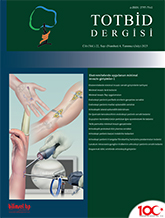
Fracture fixation methods made using small skin incisions and designed to reduce surgical trauma of soft tissues are called minimally invasive fracture fixation, and methods where these fixations are made with plates, are called minimally invasive plate osteosynthesis. In the historical process, significant changes and developments have been experienced in bone fixation methods, primary-secondary union concepts for bone healing, absolute-relative fixation concepts in fracture fixation have been defined, and the importance of biological fixation methods has been understood. Since the fracture site is not opened in minimally invasive fracture fixation, the blood supply to the fracture is not impaired, thus reducing the complication rates such as infection and nonunion. There are minimally invasive plate osteosynthesis methods defined for the upper and lower extremities. There are studies reporting successful results, especially on the humerus and calcaneus. For successful minimally invasive fracture surgery, it is necessary to evaluate each fracture individually, to know which fixation methods should be applied in simple fractures and complex fractures and what type of bone healing will occur, and to pay maximum attention to reduction and basic fracture fixation principles while respecting soft tissue.